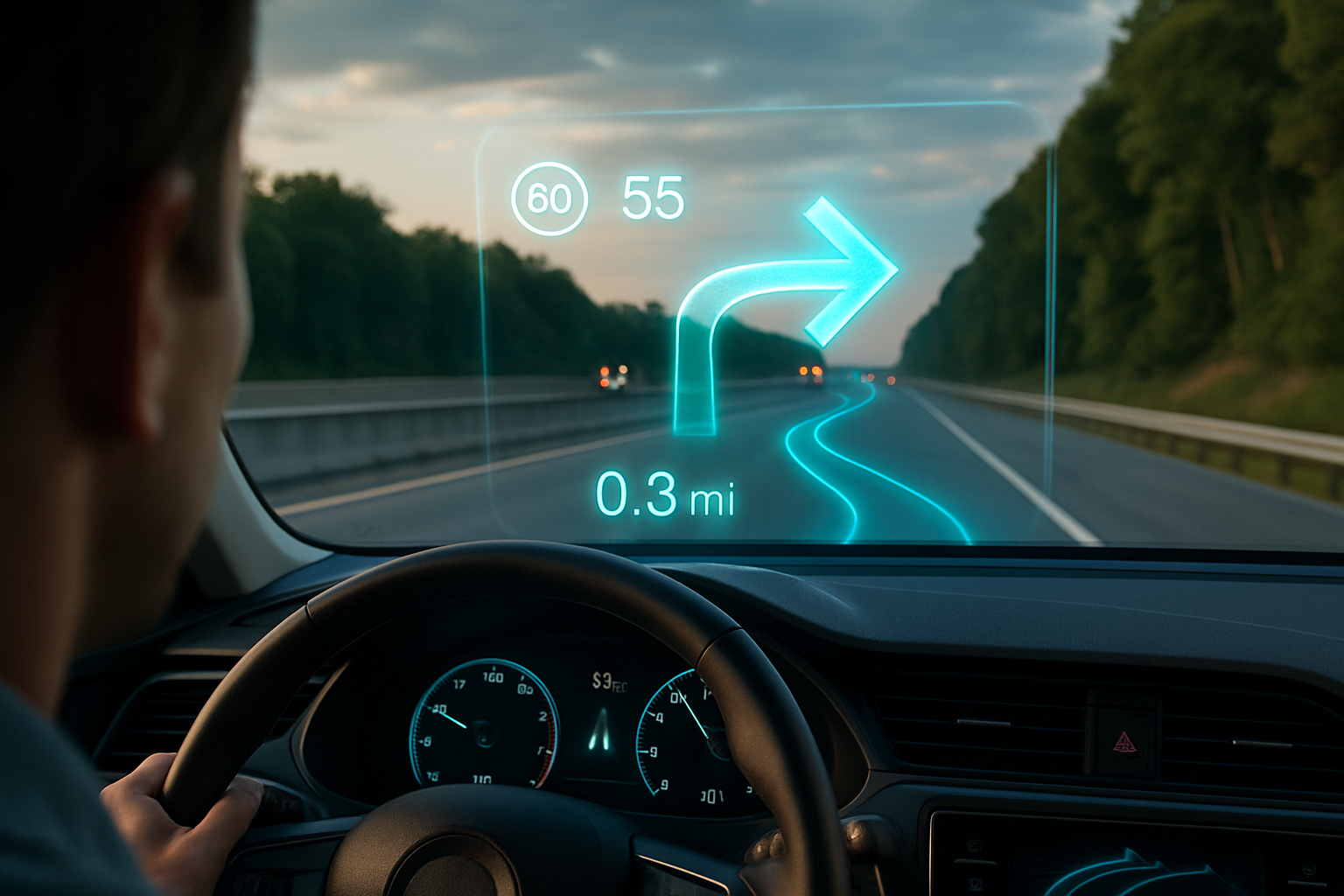Holographic Heads-Up Displays: The Future of In-Car Information
The automotive industry is on the brink of a visual revolution, with holographic heads-up displays (HUDs) set to transform the way drivers interact with their vehicles. This cutting-edge technology promises to enhance safety, improve navigation, and elevate the overall driving experience. But what exactly are holographic HUDs, and how will they reshape our time behind the wheel?

The Evolution of In-Car Displays
The journey to holographic HUDs began decades ago with simple dashboard gauges. As technology advanced, digital displays and basic projector-based HUDs found their way into high-end vehicles. These early HUDs were limited in scope, often displaying only essential information like speed and basic navigation cues.
Today’s HUDs have come a long way, offering more detailed information and improved visibility. However, they still rely on flat, two-dimensional projections that can sometimes feel disconnected from the real world beyond the windshield.
How Holographic HUDs Work
Holographic HUDs represent a quantum leap in display technology. Unlike traditional HUDs that project images onto a flat surface, holographic systems create three-dimensional images that appear to float in space. This is achieved through a combination of advanced optics, laser technology, and holographic films embedded in the windshield.
The system works by projecting light onto a specially designed holographic film. This film diffracts the light, creating a three-dimensional image that appears to hover in the driver’s field of view. The result is a display that seamlessly integrates with the real world, providing information in a more intuitive and less distracting manner.
Benefits of Holographic HUDs
The advantages of holographic HUDs extend far beyond their futuristic appeal. By presenting information in a more natural, three-dimensional format, these systems can significantly reduce the cognitive load on drivers. This means less time spent glancing at dashboard displays and more attention focused on the road.
Safety is perhaps the most crucial benefit. Holographic HUDs can display warning signals and highlight potential hazards in a way that feels more immediate and urgent than traditional displays. For example, a holographic arrow could appear to point directly at an approaching vehicle in the driver’s blind spot, making it almost impossible to miss.
Enhanced Navigation and Augmented Reality
One of the most exciting applications of holographic HUDs is in the realm of navigation. Instead of relying on a small screen or voice instructions, drivers could see holographic arrows and markers that appear to overlay the actual road ahead. This augmented reality approach to navigation could make wrong turns a thing of the past and significantly reduce driver stress in unfamiliar areas.
The technology also opens up possibilities for enhanced driver assistance systems. Holographic displays could highlight lane markings, indicate safe following distances, or even project virtual barriers around pedestrians and cyclists, all in real-time and in three dimensions.
Challenges and Future Developments
Despite their potential, holographic HUDs face several hurdles before widespread adoption. The technology is still in its infancy, and issues like image brightness, viewing angle limitations, and integration with existing vehicle systems need to be addressed.
Cost is another significant factor. Currently, the advanced optics and specialized windshields required for holographic HUDs make them prohibitively expensive for mass-market vehicles. However, as with many automotive technologies, economies of scale and continued research are likely to bring costs down over time.
The Road Ahead
As holographic HUD technology matures, we can expect to see increasingly sophisticated applications. Future systems might incorporate eye-tracking technology to adjust the display based on where the driver is looking, or use artificial intelligence to prioritize and present information based on driving conditions and driver preferences.
The potential for personalization is vast. Drivers might be able to customize their holographic displays, choosing what information to show and how it’s presented. This could lead to a more tailored, enjoyable driving experience that adapts to individual needs and preferences.
In conclusion, holographic heads-up displays represent a significant leap forward in automotive interface design. By presenting information in a more intuitive, three-dimensional format, these systems have the potential to enhance safety, improve navigation, and transform the way we interact with our vehicles. While challenges remain, the future of in-car information looks decidedly holographic, promising a driving experience that’s both safer and more engaging than ever before.




